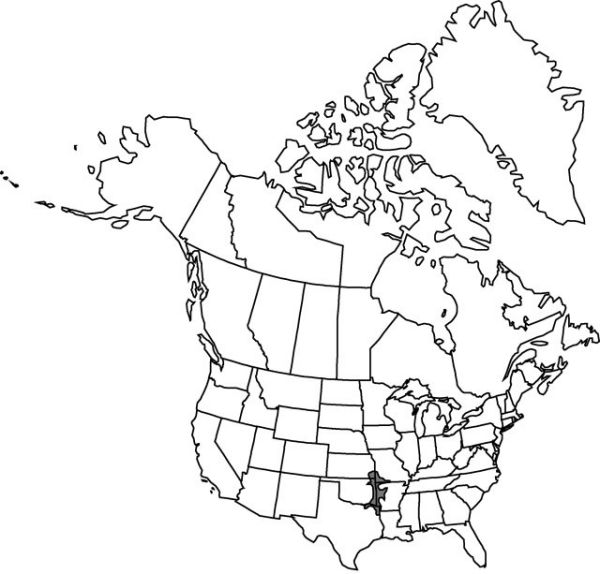Trillium viridescens
Trans. Amer. Philos. Soc., n. s. 5: 155. 1837.
Rhizomes horizontal, brownish, short, thick, praemorse, not brittle. Scapes 1–3, round in cross section, 2–5 dm, ± stout, glabrous to scabrous. Bracts touching ground in early anthesis or not at all, sessile; blade dark green, obscurely marked with few–many darker blotches (very rarely unmottled), mottling becoming obscure with age, few or no stomates adaxially, ovate-elliptic to broadly so, 8.5–14 × 6.8–9 cm, apex acuminate. Flower erect, odor, if present, spicy or musty; sepals displayed above bracts, widely spreading, green or variously purple marked, lanceolate, 38–60 × 5–12 mm, margins entire, apex acute; petals long-lasting, erect, ± connivent, ± concealing stamens and ovary, purplish black on claw, greenish to yellow-green distally, sometimes all dark purple, occasionally slightly twisted, linear to narrowly spatulate, 4–8 × 0.8–1.2 cm, thick-textured, base slightly thickened and clawed, margins entire, apex rounded, lacking nipple; stamens erect, connivent (clustered together, leaning upon each other), 16–25 mm; filaments olive or purplish brown, 2.5–5 mm, very slender, widened basally; anthers erect, straight or slightly incurved, olive-brown, 13–20 mm, ± slender, dehiscence latrorse; connectives brownish, barely extending beyond anther sacs; ovary pale greenish white basally, purplish distally, ovoid, 6-angled, 5.5–10 mm; stigmas erect, divergent-recurved, distinct, purplish abaxially, sessile, almost linear, 6–10 mm, ± equaling ovary, ± not fleshy, very slightly widened basally. Fruits dark purplish green or green, odor unreported, ovoid, obscurely angled, with remains of persistent stigma, 0.7–1.5 cm, pulpy, not juicy at time of separation from receptacle.
Phenology: Flowering spring (early Apr–mid May).
Habitat: Deciduous forests, usually quite rich, on banks, bluffs, talus slopes, floodplain alluvium, with cane (Arundinaria) or on sloping banks just above normal flood levels in heavy, clayey soils, with common spring ephemerals
Elevation: 100–400 m
Distribution

Ark., Kans., Mo., Okla., Tex.
Discussion
Of conservation concern.
J. D. Freeman (1975) considered that Trillium viridescens intergrades with T. gracile in northeastern Texas and stated that these putative intergrades produce purple petals, but purple-petaled forms also occur in Arkansas, far from the influence of T. gracile.
Selected References
None.